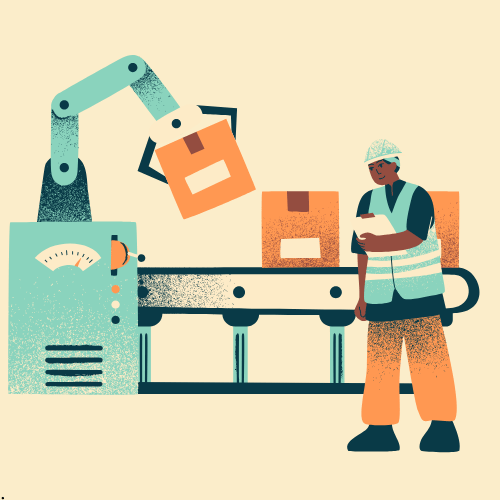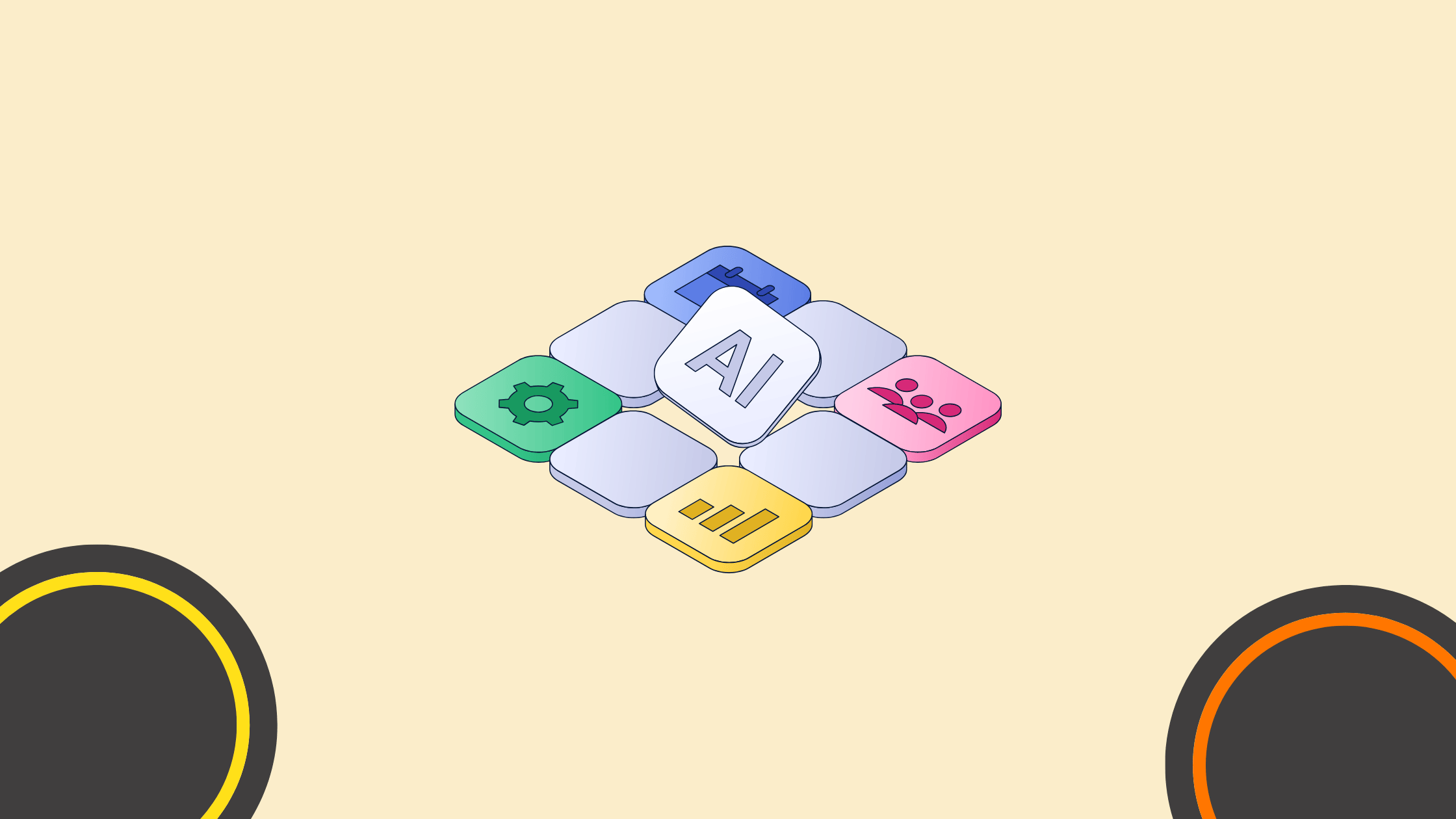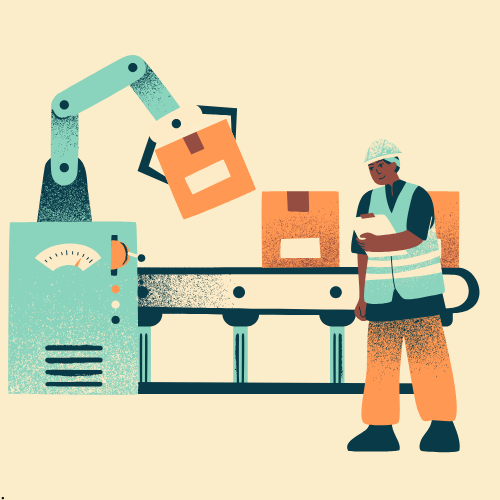How Niche B2B Manufacturers Can Use AI Storytelling to Drive Sales

AI storytelling is the use of artificial intelligence tools to create, refine, and distribute stories that connect data-driven products with human emotions. For niche B2B manufacturers, this approach represents a powerful bridge between technical precision and market resonance. According to the Content Marketing Institute, 73% of B2B marketers say that creating engaging content is their biggest challenge, and that’s exactly where AI can help.
By blending creativity with automation, manufacturers can turn complex product features into compelling stories that drive awareness, trust, and conversions.
This article examines how AI storytelling operates, its significance for industrial brands, and how to effectively implement it across marketing and sales teams.
Chapters
- How Can AI Automate and Optimize Tasks in Your Campaigns?
- Why Does Storytelling Matter for Manufacturers?
- How Can AI Make Industrial Storytelling More Effective?
- Understanding the B2B Manufacturing Audience
- What Are the Key Elements of a Successful AI-Driven Story?
- How to Build an AI Storytelling Strategy for B2B Manufacturing
- What Are the Advantages of Using AI for B2B Storytelling?
- What Are the Limitations of AI Storytelling in Manufacturing?
- How Does AI Storytelling Compare to Traditional Content Marketing?
- What Are the Best AI Tools for Industrial Storytelling?
- How Can Manufacturers Integrate AI Storytelling into Their Sales Process?
- What Are the Best Practices for Maintaining Human Authenticity in AI Content?
- How Do Real B2B Manufacturers Use AI Storytelling Successfully?
- What Metrics Should You Track to Measure AI Storytelling Success?
- Conclusion
How Can AI Automate and Optimize Tasks in Your Campaigns?

AI storytelling is the process by which artificial intelligence assists in generating and optimizing narratives for industrial brands. It combines data processing, natural language generation, and marketing psychology to create stories that resonate with both engineers and executives. For B2B manufacturers, this technology converts technical product information, such as specifications, tolerances, and performance metrics, into relatable narratives that appeal to decision-makers.
AI platforms, such as StoryLab.ai and ChatGPT, enable companies to generate blog ideas, LinkedIn posts, or product copy that strikes a balance between technical depth and an engaging tone. When used effectively, AI storytelling helps small manufacturing firms communicate their expertise clearly without requiring a full-scale marketing department. It enables faster, more consistent, and more customer-centric industrial communication.
Why Does Storytelling Matter for Manufacturers?
Storytelling matters because it helps translate complex technology into a form that is understandable to humans. A manufacturer may produce high-precision components, but customers buy into the story of reliability, innovation, and problem-solving capacity. Good storytelling makes technical credibility relatable.
In B2B contexts, a clear story drives emotional engagement in what might otherwise be logic-driven decisions. Industrial buyers still value trust and brand authenticity. By crafting narratives around challenges solved, efficiency gained, or sustainability achieved, manufacturers shape perception and loyalty. Without storytelling, even the most advanced machinery risks being perceived as just another product in a crowded marketplace.
How Can AI Make Industrial Storytelling More Effective?
AI enhances storytelling by amplifying scale, precision, and personalization. Instead of guessing what message will resonate, manufacturers can now use AI to analyze data and craft stories that speak directly to their audience. AI-generated content can adapt to tone, channel, and buyer persona, ensuring that the same message fits both technical engineers and executive readers.
Here are five ways AI enhances industrial storytelling:
- Generates consistent tone and brand language across all marketing channels
- Optimizes SEO to help niche manufacturers reach new audiences
- Creates multilingual content for global operations
- Analyzes performance metrics to predict engagement trends
- Suggests narrative formats based on customer behavior data
When used correctly, AI becomes more than just a writing tool; it’s a storytelling strategist capable of transforming industrial marketing into an engaging and measurable science.
Understanding the B2B Manufacturing Audience

The B2B manufacturing audience comprises professionals who value precision, data, and a strong return on investment. Unlike general consumers, they are motivated by trust and tangible outcomes. To connect with them, stories must be factual yet emotionally resonant.
The audience can be divided into four key segments:
- Engineers: Value detailed product insights and technical credibility
- Procurement managers: Seek cost savings and supplier reliability
- OEM decision-makers: Focus on innovation and long-term performance
- Distributors: Prefer stories highlighting logistics, scalability, and product demand
Each audience group needs stories that clarify how a manufacturer’s solution improves their process or reduces inefficiency. For instance, a story emphasizing precision manufacturing solutions can appeal to buyers seeking quality and consistency in sheet metal fabrication.
What Are the Key Elements of a Successful AI-Driven Story?
A successful AI-generated story combines emotion, clarity, and data. The best ones strike a balance between technology and humanity, connecting machine performance to real-world outcomes.
The five essential elements of an effective AI-driven story include:
- Human context: Begin with relatable challenges faced by the audience
- Innovation angle: Showcase how the product offers a new or improved solution
- Emotional hook: Introduce an element of aspiration, pride, or relief
- Data validation: Support claims with quantifiable results or case data
- Action point: End with a clear call-to-action leading to measurable engagement
Each story should make the reader see not only what the product does, but also why it matters in their business landscape.
How to Build an AI Storytelling Strategy for B2B Manufacturing
Building a strategy involves aligning technology, creativity, and sales intent. There are six main steps to implement AI storytelling effectively:
- Define brand voice and values: Establish how your company wants to sound, whether authoritative, innovative, or approachable.
- Map customer personas: Identify who reads your content and what problems they face.
- Gather product and customer data: Feed AI systems with real case studies, testimonials, and performance metrics.
- Select AI tools for content creation: Choose platforms like StoryLab.ai or Jasper based on desired formats and scale.
- Automate story testing and optimization: Utilize analytics to identify which storylines resonate most effectively with your audience.
- Analyze engagement metrics: Refine messaging based on measurable outcomes such as time on page or conversion rate.
- When these steps align, AI storytelling becomes a structured engine that continuously learns and adapts to your audience’s needs.
What Are the Advantages of Using AI for B2B Storytelling?
The benefits of AI storytelling extend beyond time savings. It enhances creativity, consistency, and impact. The top 5 advantages include:
- Boost productivity: AI helps create more content in less time.
- Personalize messaging: Tailor stories for engineers, managers, or distributors
- Maintain accuracy: AI ensures data and product specifications remain correct.
- Shorten sales cycles: Personalized stories convert leads faster.
- Improve ROI tracking: Data integration enables performance evaluation.
By merging efficiency with insight, AI-driven storytelling provides manufacturers with a competitive edge in markets where trust and innovation are key to success.
What Are the Limitations of AI Storytelling in Manufacturing?
Despite its benefits, AI has its boundaries. The four most common limitations are:
- Losing brand authenticity: Over-automation can make messages sound generic and impersonal.
- Over-reliance on data: Storytelling may become too mechanical
- Missing niche terminology: AI can struggle with industry-specific language
- Raising ethical questions: Intellectual property and data use can be problematic
Manufacturers should always blend AI efficiency with human review. Human editors ensure emotional resonance, ethical responsibility, and brand uniqueness remain intact.
How Does AI Storytelling Compare to Traditional Content Marketing?
AI storytelling differs from traditional marketing by emphasizing automation and adaptability. Traditional content relies heavily on manual creativity, while AI leverages data-driven insights to optimize performance.
- AspectAI Storytelling Traditional Marketing
- Speed High (instant generation) Slower (manual creation)
- Personalization, Dynamic, data-driven, Limited
- Consistency, Algorithmic tone control, depends on the human writer
- Creativity Guided by prompts, Fully human-based
- ROI tracking, Automated analytics , Manual reporting
AI storytelling complements, not replaces, traditional creativity. The two approaches together create a balanced system that marries intuition with intelligence.
What Are the Best AI Tools for Industrial Storytelling?

AI tools vary in capability and focus. In the manufacturing context, the following platforms offer strong support for storytelling:
- StoryLab.ai: Excellent for blog and ad copy ideation
- Jasper: Ideal for branded long-form storytelling
- ChatGPT: Great for conversational, technical content generation
- Copy.ai specializes in crafting short, catchy marketing copy.
- Writesonic: Offers SEO-focused content creation and optimization.
Each platform fits a different role in a manufacturer’s communication strategy. Choosing the right tool depends on whether your goal is to raise awareness, drive conversions, or provide technical education.
How Can Manufacturers Integrate AI Storytelling into Their Sales Process?
AI storytelling becomes most powerful when aligned with sales. There are five key stages for seamless integration:
- Create customer education materials, including white papers and blog posts.
- Embed AI-crafted stories into sales presentations and product brochures.
- Train sales teams using AI-generated conversation scripts to enhance their effectiveness.
- Analyze customer sentiment through AI-driven feedback systems.
- Personalize follow-up messages for customer retention.
By automating these stages, manufacturers ensure that every sales touchpoint tells a consistent, engaging story. Platforms like Quality Control Advisor can complement this by providing insight into production reliability, which strengthens the credibility of the story behind each product.
What Are the Best Practices for Maintaining Human Authenticity in AI Content?
The most successful AI stories still sound human. To preserve authenticity, follow these four techniques:
Maintain editorial oversight from subject matter experts
Review AI drafts for cultural tone and emotional nuance
Incorporate customer testimonials and real feedback
Keep voice consistent with brand identity
When AI works in tandem with human creativity, storytelling gains both scale and soul.
How Do Real B2B Manufacturers Use AI Storytelling Successfully?
Real-world success stories show AI’s potential in action. One industrial automation company utilized AI to repurpose technical datasheets into readable case studies, resulting in a 42% increase in lead engagement. Another robotics supplier utilized AI-powered language tools to create LinkedIn posts, which increased follower interaction by 60%.
These examples demonstrate that even small manufacturers can achieve big visibility gains with AI storytelling, as long as they maintain authenticity and align narratives with customer needs.
What Metrics Should You Track to Measure AI Storytelling Success?
Success should be measurable. The five key metrics to track include:
- Engagement rate: How long users stay with the content
- Lead quality: Whether AI stories attract the right prospects
- Conversion rate: The percentage of readers who take action
- Content output speed: Time saved per campaign cycle
- ROI improvement: Cost-to-revenue performance after adoption
Tracking these indicators allows manufacturers to continuously refine both AI algorithms and messaging strategies.
Conclusion
AI storytelling is not about replacing creativity; it’s about enhancing it. For niche B2B manufacturers, it transforms technical excellence into relatable, high-impact narratives that resonate with modern buyers. When properly integrated into sales and marketing, AI storytelling bridges the gap between data and emotion, logic and loyalty.
The future of manufacturing communication lies in this partnership between human ingenuity and machine precision, where every story has both a brain and a heartbeat.
Other Interesting Articles
- AI LinkedIn Post Generator
- Gardening YouTube Video Idea Examples
- AI Agents for Gardening Companies
- Top AI Art Styles
- Pest Control YouTube Video Idea Examples
- Automotive Social Media Content Ideas
- AI Agent for Plumbing Business
- Plumber YouTube Video Idea Examples
- AI Agents for Pest Control Companies
- Electrician YouTube Video Idea Examples
- AI Agent for Electricians
- How Pest Control Companies Can Get More Leads
- Top Software Development Companies
Master the Art of Video Marketing
AI-Powered Tools to Ideate, Optimize, and Amplify!
- Spark Creativity: Unleash the most effective video ideas, scripts, and engaging hooks with our AI Generators.
- Optimize Instantly: Elevate your YouTube presence by optimizing video Titles, Descriptions, and Tags in seconds.
- Amplify Your Reach: Effortlessly craft social media, email, and ad copy to maximize your video’s impact.
The post How Niche B2B Manufacturers Can Use AI Storytelling to Drive Sales appeared first on StoryLab.ai.


Deixe um comentário